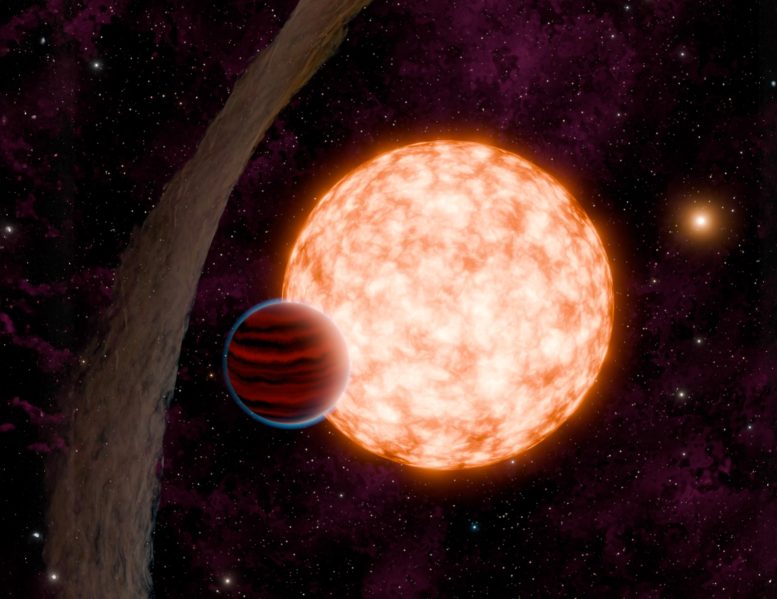
By University of North Carolina at Chapel Hill November 23, 2024
Collected at: https://scitechdaily.com/youngest-planet-discovery-shatters-planetary-formation-theories/
Researchers have discovered TIDYE-1b, a young planet only 3 million years old, rapidly orbiting its star. This finding contradicts older theories of planetary development and paves the way for future research into planetary formation and atmospheric analysis.
Researchers at the University of North Carolina at Chapel Hill have made a groundbreaking discovery: a planet named TIDYE-1b, estimated to be just 3 million years old. To put that into perspective, it’s like finding a two-week-old baby on a human timescale. This remarkable planet challenges existing theories about how quickly planets can form. While Earth took 10 to 20 million years to develop, TIDYE-1b formed in only 3 million years and completes an orbit around its star every week.
The discovery offers an unprecedented look at the earliest stages of planet formation, establishing a new standard for identifying and studying young planets. It also represents a significant step in understanding the development of planetary systems beyond our own.
“Astronomy helps us explore our place in the Universe — where we came from and where we might be going. Discovering planets like this one allows us to look back in time, catching a glimpse of planetary formation as it happens,” said Madyson Barber, lead author of the study and a researcher in the Department of Physics and Astronomy at UNC-Chapel Hill.
Insights From a Young Planetary System
The team of researchers aimed to explore how planets form and evolve, with a focus on identifying planets at various stages to better understand these processes. TIDYE-1b, the youngest known transiting planet, offers a unique window into the environment of an emerging planetary system. This discovery sheds light on potential differences between our solar system and systems hosting close-in giant planets like TIDYE-1b, providing a greater context for our own cosmic neighborhood.
This discovery opens new research avenues, as this planet, still within its natal disk of material, allows scientists to study the formation process up close. Follow-up studies will analyze how the planet’s atmosphere compares to the surrounding disk material, providing clues about its journey to its compacted orbit. Researchers will also examine whether TIDYE-1b is still growing by accreting material or possibly losing its upper atmosphere due to the influence of its host star.
A Twist in Planetary Alignment and Formation Models
“Planets typically form from a flat disk of dust and gas, which is why planets in our Solar System are aligned in a ‘pancake-flat’ arrangement. But here, the disk is tilted, misaligned with both the planet and its star — a surprising twist that challenges our current understanding of how planets form,” said Andrew Mann, principal investigator of the Young Worlds Laboratory and associate professor of physics and astronomy at UNC-Chapel Hill.
The technique used to detect the planet makes this discovery especially significant. Typically, planets on the edge of their solar system this young are impossible to observe due to interference from the surrounding disk. However, the star’s disk is warped, allowing a rare observation opportunity. The research team employed a specially designed search algorithm, Notch, and refined data extraction methods from NASA’s TESS mission to detect and confirm this planet. The collaboration’s access to numerous telescopes facilitated the verification of the discovery, ensuring the signal was planetary.
Reference: “A giant planet transiting a 3-Myr protostar with a misaligned disk” by Madyson G. Barber, Andrew W. Mann, Andrew Vanderburg, Daniel Krolikowski, Adam Kraus, Megan Ansdell, Logan Pearce, Gregory N. Mace, Sean M. Andrews, Andrew W. Boyle, Karen A. Collins, Matthew De Furio, Diana Dragomir, Catherine Espaillat, Adina D. Feinstein, Matthew Fields, Daniel Jaffe, Ana Isabel Lopez Murillo, Felipe Murgas, Elisabeth R. Newton, Enric Palle, Erica Sawczynec, Richard P. Schwarz, Pa Chia Thao, Benjamin M. Tofflemire, Cristilyn N. Watkins, Jon M. Jenkins, David W. Latham, George Ricker, Sara Seager, Roland Vanderspek, Joshua N. Winn, David Charbonneau, Zahra Essack, David R. Rodriguez, Avi Shporer, Joseph D. Twicken and Jesus Noel Villaseñor, 20 November 2024, Nature.
DOI: 10.1038/s41586-024-08123-3

Leave a Reply